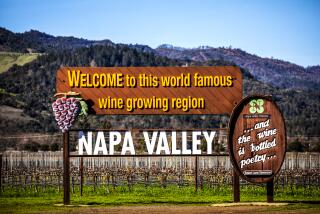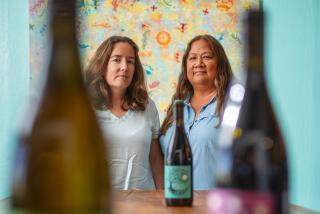An app that shows you Napa Valley’s organic wines and wineries
It’s Earth Day. And for anyone who cares about the environment, the app “Organically Napa: A Tasting and Touring Guide,” reveals just how many Napa Valley wineries are farming organically — and how and when to visit.
Pam Strayer of Wine Country Geographic and the blog Organic Wines Uncorked did the research and presents her findings in a $9.99 app available in the Apple App store or, for Android, on Google Play.
Strayer had been a health and environmental journalist for years when her work with genetic scientists on cancer led her to consider the vineyards that surround the Bay Area where she lives.
“You can’t drive anywhere without seeing hundreds of acres of vines,” Strayer says. “And I found out that California requires everyone to report the pesticides they use to the California Department of Pesticide Regulation. I was curious and started looking at that and I became concerned.”
She started her research in Mendocino County simply because those were the organically grown wines she could afford.
“Then I started looking at Napa and found that an equal number of vines there were organic — about 4,000 acres,” Strayer says. “In Napa that means, 8 [%] or 9% of the vines under cultivation are certified organic.”
As she delved deeper, she decided to turn her research into an app so other like-minded wine drinkers could find organic wines and wineries. Some are certified. Others practice organic farming without the certification. Many are leaning organic, slowly weaning their vineyards off pesticides.
In all,Strayer’s app includes 43 Napa wineries. They can be filtered by whether the vineyard and/or wine is certified biodynamic or made with 100% organic grapes, by ambiance (elegant or farm/nature setting), best buys, or whether they receive walk-ins or visits are by appointment only.
You can search for wines given 90+ points by wine critics, for dog-friendly wineries, estates with bocce courts or gardens, whether picnicking is allowed, by specialty (Chardonnay, Pinot Noir, Zinfandel, etc.) and much more.
Grgich Hills Estate, for example, produces 70,000 cases of organically grown wines, making it the largest organic producer in the Napa Valley. The wines are also certified Biodynamic. Owner/winemaker Mike Grgich, it should be remembered, made a wine that won the famous Paris Tasting in 1976, putting Napa Valley on the world wine stage. Strayer writes that Grgich offers “one-of-a-kind vineyard tours with hands-on organic experts Ivo Jeramaz or Justin Hills and says it is one of the best organic wine tours in the U.S.
For each winery, she gives detailed information on cost of tasting, how to make an appointment, what the tour is like, what’s included in a tasting and how long it lasts. If you want to delve further, she includes notes on the history of the winery and their wines, both those that are widely available and those made in small lots — and which the critics have rated the highest.
Strayer has also produced a similar app for Sonoma County called “Organically Sonoma: A Tasting and Touring Guide.” And if you just want a guide to Napa or Sonoma wines without all the visiting information, get her “Organically Napa: Wine Finder or Organically Sonoma: Wine Finder.”
In the works: “Organically Mendocino: Wine Finder.” By the end of the year, Strayer plans to publish the apps’ content as both books and ebooks.
Check Wine Country Geographic’s app page for more information. Strayer also gives tours and offers trip planning services.
Follow @sirenevirbila for more on food and wine.
More to Read
Eat your way across L.A.
Get our weekly Tasting Notes newsletter for reviews, news and more.
You may occasionally receive promotional content from the Los Angeles Times.






